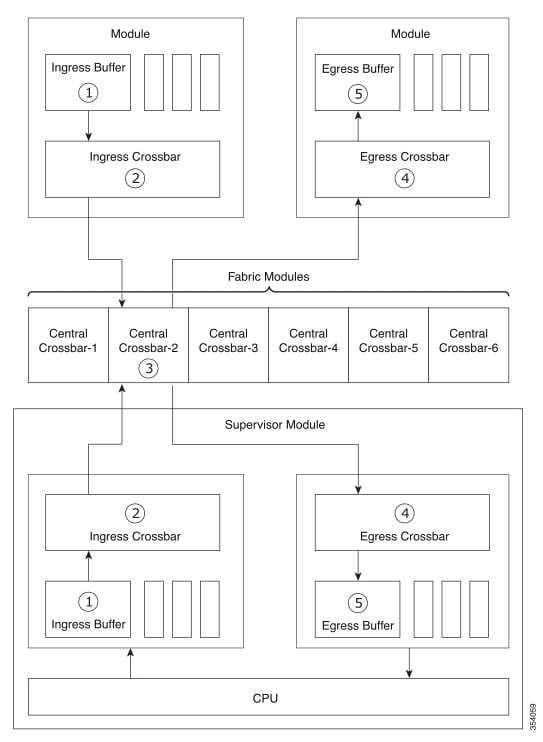Supervisor Redundancy
Cisco MDS Director switches have two supervisor modules for redundancy. When the switch powers up and both supervisor modules are present, the supervisor module that comes up first enters the active mode and the supervisor module that comes up second enters the standby mode. The supervisor in active mode is in control of the switch. It performs all the necessary functions to ensure that all the switch's components are operating normally. The standby supervisor module constantly monitors the active supervisor module. If the active supervisor module fails, the standby supervisor module takes over without any impact to the user traffic. If the failed supervisor recovers, it will become the standby supervisor and monitors the new active supervisor.
Prior to Cisco MDS NX-OS Release 8.4(2), the standby supervisor's management Ethernet link on Cisco MDS Director switches was down. Therefore, the peer port of the management link was also down and could be mistaken as an unused port. This unused port could either be mistakenly disabled or repurposed. If a switchover occurred, the management link on the newly active supervisor would not be available and the switch would become unmanageable because there would be no active connection to the newly active supervisor's management port.
From Cisco MDS NX-OS Release 8.4(2), the standby supervisor's management Ethernet link on Cisco MDS Director switches is brought up when the supervisor reaches the standby state. However, no upper layer protocols, such as IP, are active. This allows the peer port of the standby supervisor's management link to be up and not mistakenly disabled or repurposed due to being down for a long duration.
 Note |
For out of band management with high availability in director switches, you must connect the mgmt0 port of both supervisors to the same subnet or virtual LAN since the mgmt0 IP address will be used by whichever supervisor is currently active. |

 Feedback
Feedback